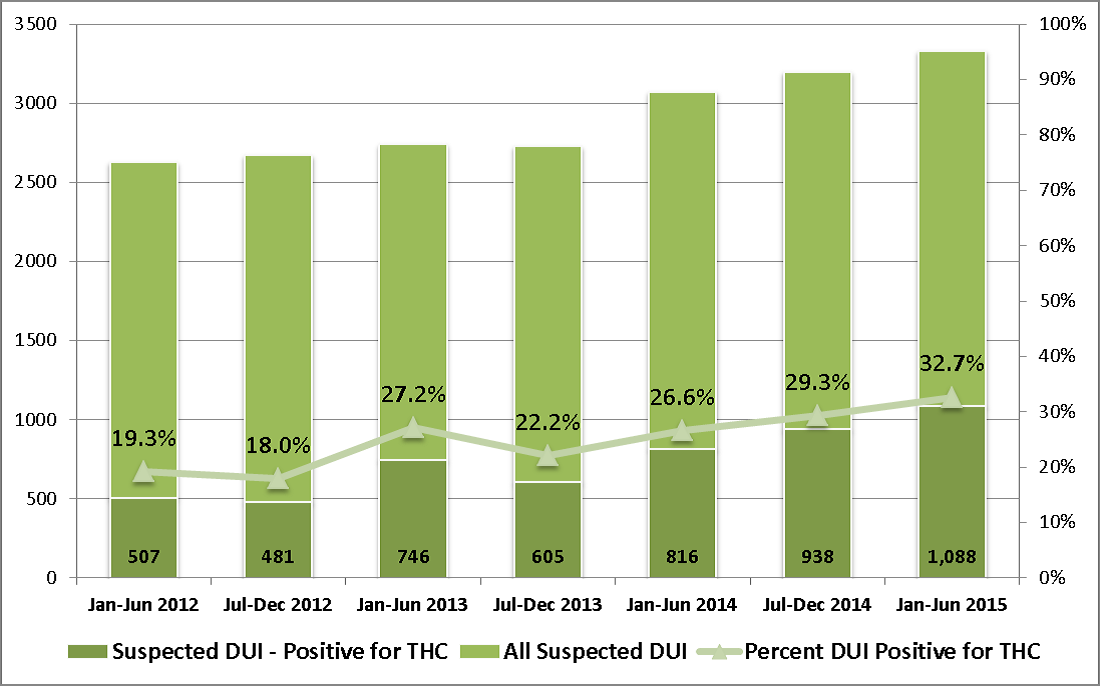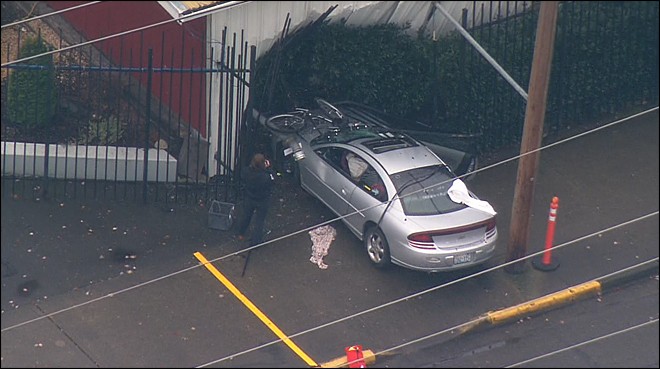
The number of marijuana-impaired drivers rose to 75 in 2014, first year of edible sales, up from 38 in 2013.
Phillip Drum, PharmD., writes the following summary of this report: Washington’s driving data is finally coming out and it is NOT good at all. It confirms what Dr. Marilyn Huestis has been warning about for years – that marijuana impairs driving.
Here are key observations gleaned from this more detailed fatal crash information with a focus on cannabinoid-positive drivers:
– From 2010-2014 there were 3,027 drivers involved in fatal crashes, of which 1,773 (58.6 percent) were tested for both alcohol and drugs with known results. Of the 1,773 drivers analyzed 1,061 (59.8 percent) were positive for alcohol and/or drugs.
– In 2014, 84.3 percent of drivers positive for cannabinoids were positive for THC, compared to only 44.4 percent of cannabinoid-positive drivers in 2010. In 2014, among the 75 drivers involved in fatal crashes positive for THC, approximately half (38) exceeded the 5 ng/ml THC per se limit.
– The frequency of drivers in fatal crashes that tested positive for THC, alone or in combination with alcohol or other drugs, was highest in 2014 (75 drivers) compared to the previous four-year average (36 drivers). The frequency of drivers with alcohol greater than/equal to BAC .08 and no other drugs was lowest in 2014 (51 drivers) compared to the previous four-year average (98 drivers).
– From the 1,061 drivers who tested positive for alcohol and/or drugs, mutually exclusive driver categories were established. This report focuses on a subset of these driver comparison groups (547 total drivers):
o Only THC (56, 5.3 percent)
o Only carboxy-THC (37, v3.5 percent)
o THC and alcohol greater than/equal to BAC .08 (83, v7.8 percent)
o THC, alcohol greater than/equal to BAC. 08, and drugs (18, b1.7 percent)
o THC and other drugs (39, 3.7 percent)
o Only alcohol greater than/equal to BAC .08 (314, 29.6 percent)
– Among drivers in fatal crashes that tested positive for only THC or only carboxy-THC, the largest proportion are ages 16-25. This age group also had the highest proportion of drivers with alcohol greater than/equal to BAC .08. Of drivers that tested positive for the combination of THC and alcohol greater than/equal to BAC 0.08, 39.8 percent were ages 16-25. (ANOTHER REASON TO LIMIT THC TO THOSE ABOVE 25yo)
– Similar to drivers with only alcohol greater than/equal to BAC .08, drivers with the combination of THC and alcohol greater than/equal to BAC .08 were involved in fatal crashes that occurred most frequently on the weekends. Drivers with only THC were involved in fatal crashes that occurred equally between weekends (48.2 percent) and weekdays (51.8 percent).
– Drivers with alcohol greater than/equal to BAC .08, alone or in combination with other drugs, were involved in fatal crashes that occurred most often during the nighttime hours (6 p.m. – 5 a.m.).
– Drivers with only THC or only carboxy-THC were involved in fatal crashes that occurred most often during the daytime hours , similar to drivers with no drugs or alcohol.
– Drivers with only alcohol greater than/equal to BAC .08 were involved in fatal crashes that occurred most frequently on rural roads (58.6 percent), whereas the majority of drivers with only THC were involved in fatal crashes that occurred most frequently on urban roads (58.9 percent).
– Drivers with alcohol greater than/equal to BAC .08, alone or in combination with other drugs, were most frequently the only unit (no other vehicles or non-motorists) involved in the fatal crash. In contrast, over 70 percent of drivers with only THC or only carboxy-THC were involved in multiple unit fatal crashes , similar to the frequency of drivers with no drugs or alcohol.
– Drivers involved in fatal crashes with no drugs or alcohol and drivers with only carboxy-THC had the highest frequency of no reported crash contributing circumstances (approximately 44 percent). (THAT IS WHY GETTING A CARBOXY-THC VALUE IS USELESS AND A WASTE OF RESOURCES)
– Among drivers with only THC, 28.6 percent had no other crash contributing circumstances reported, compared to 17.5 percent of drivers with only alcohol greater than/equal to BAC .08.

– The most frequently reported driver error among drivers in fatal crashes with only THC was lane deviation (12.5 percent), followed by overcorrecting (8.9 percent).
– More than half of drivers with only alcohol greater than/equal to BAC .08 involved in fatal crashes were speeding. Over 60 percent of drivers with alcohol greater than/equal to BAC .08 and THC combined were speeding.

